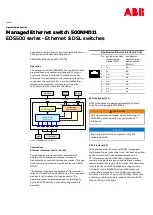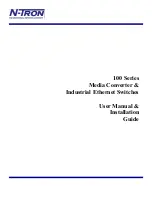
94
VP-733 - Protocol 3000
All the examples provided in this section are based on using the
K-Config software.
You can enter commands directly using terminal communication software (e.g.,
Hercules) by connecting a PC to the serial or Ethernet port on your device. To enter
CR
press the Enter key (
LF
is also sent but is ignored by the command parser).
Commands sent from various non-Kramer controllers (e.g., Crestron) may require
special coding for some characters (such as,
/X##
). For more information, refer to
your controller’s documentation.
For more information about Protocol 3000 commands, see:
•
Understanding Protocol 3000,
Section 12.1
•
Kramer Protocol 3000 Syntax,
Section 12.2
•
Protocol 3000 Commands,
Section 12.3
12.1
Understanding Protocol 3000
Protocol 3000 commands are structured according to the following:
•
Command
–
A sequence of ASCII letters (A-Z, a-z and -). A command and its
parameters must be separated by at least one space.
•
Parameters
–
A sequence of alphanumeric ASCII characters (0-9, A-Z, a-z
and some special characters for specific commands). Parameters are
separated by commas.
•
Message string
–
Every command entered as part of a message string
begins with a message starting character and ends with a message closing
character.
A string can contain more than one command. Commands are
separated by a pipe (
|
) character.
•
Message starting character:
▪
#
– For host command/query
▪
~
– For device response
•
Device address
– K-NET Device ID followed by
@
(optional, K-NET only)















































